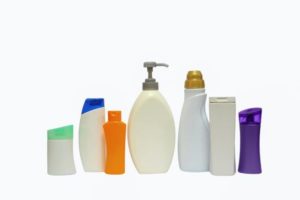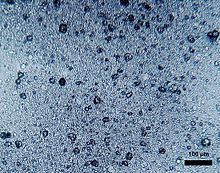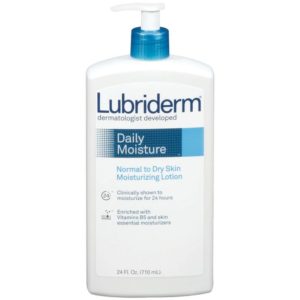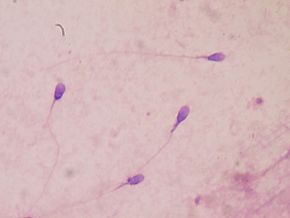 Chemicals known as "forever chemicals" or PFAS have been in the news a lot recently. This is because PFAS (per- and polyfluoroalkyl substances) are in so many products that we all use, yet research is showing more and more health harms from them. Including to pregnant women and developing babies.
Chemicals known as "forever chemicals" or PFAS have been in the news a lot recently. This is because PFAS (per- and polyfluoroalkyl substances) are in so many products that we all use, yet research is showing more and more health harms from them. Including to pregnant women and developing babies.
A recent study found that pregnant women who ate more ultra-processed or fast foods had higher levels of a type of forever chemicals (PFAS) called phthalates in their bodies. The food wrappers and packaging of ultra-processed and fast food, and even the gloves worn by food handlers, are a source of the harmful chemicals.
The chemicals migrate from the packaging or wrapping into the food, which is then ingested by the person. They then get into the pregnant woman's bloodstream, and eventually the placenta and fetus. They are endocrine (hormone) disruptors. Studies find that pregnant women with higher levels of phthalates have an increased risk of preterm birth, babies with low birth weight, and other problems (e.g., autism spectrum disorder).
The researchers found that diets high in vegetables, fruits, yogurt, fish, and nuts during pregnancy were associated with lower phthalate levels (measured in the urine of the pregnant women). Ultra-processed foods were between 9.8 to 59.% of the pregnant women's diets, with the average being 38.6%.
 Unfortunately, unprocessed and minimally processed foods are more expensive than ultra-processed foods. So it wasn't surprising that socioeconomic levels (including income levels) made a difference - the lower the household income, the greater the average ultra-processed food intake.
Unfortunately, unprocessed and minimally processed foods are more expensive than ultra-processed foods. So it wasn't surprising that socioeconomic levels (including income levels) made a difference - the lower the household income, the greater the average ultra-processed food intake.
Bottom line: Try to eat less fast food and pre-made packaged food. Read labels and avoid foods with ingredients that are not found normally in a home kitchen, but are chemicals (e.g., soy lecithin, carrageenan, high-fructose corn syrup, colors). We can't totally avoid all PFAS, but we can lower our exposure to them.
From Medical Xpress: Study: Pregnant women should avoid ultraprocessed, fast foods
If you're pregnant, you may want to think twice before making a hamburger run or reaching for a prepackaged pastry, according to research published last month in the journal Environmental International. ...continue reading "Pregnant Women Ingest Forever Chemicals In Ultra-Processed and Fast Foods"



 People worry about breast cancer and whether exposure to chemicals "in the environment" can lead to breast cancer. According to many studies the answer is: YES, absolutely - and this is why they are called carcinogens (a substance capable of causing cancer). What are the chemicals?
People worry about breast cancer and whether exposure to chemicals "in the environment" can lead to breast cancer. According to many studies the answer is: YES, absolutely - and this is why they are called carcinogens (a substance capable of causing cancer). What are the chemicals? Also, avoid using pesticides as much as possible, and instead use least toxic Integrated Pest Management (IPM) or organic methods, both inside the home and outside.
Also, avoid using pesticides as much as possible, and instead use least toxic Integrated Pest Management (IPM) or organic methods, both inside the home and outside.
 Recently the NFL Players Association called for all 30 NFL stadiums to use natural grass rather than synthetic or artificial turf. The
Recently the NFL Players Association called for all 30 NFL stadiums to use natural grass rather than synthetic or artificial turf. The  It turns out that the fabric used to make clothing is doused with all sorts of chemicals. Synthetic fabrics, fabrics dyed with azo dyes, and all fabrics treated to be stain repellant, anti-mold, anti-odor, wrinkle free, easy care, water resistant, flame retardant are the worst. Alden Wicker's
It turns out that the fabric used to make clothing is doused with all sorts of chemicals. Synthetic fabrics, fabrics dyed with azo dyes, and all fabrics treated to be stain repellant, anti-mold, anti-odor, wrinkle free, easy care, water resistant, flame retardant are the worst. Alden Wicker's  Do you know what chemicals you're exposed to on a daily basis? A recent study found that women with cancers of the breast, uterus, skin (melanoma), or ovaries had significantly higher levels of certain endocrine disrupting chemicals in their bodies than women without any of those cancers.
Do you know what chemicals you're exposed to on a daily basis? A recent study found that women with cancers of the breast, uterus, skin (melanoma), or ovaries had significantly higher levels of certain endocrine disrupting chemicals in their bodies than women without any of those cancers.